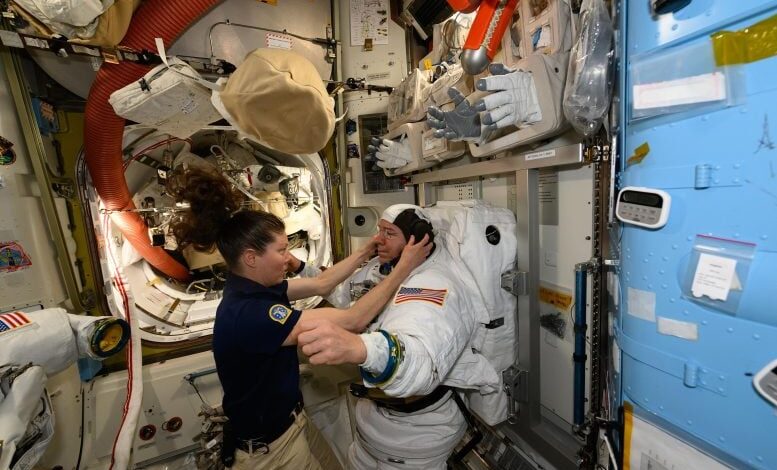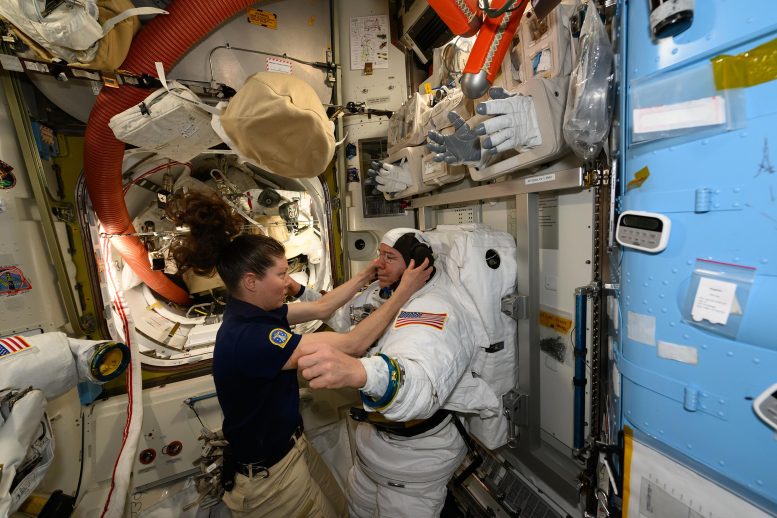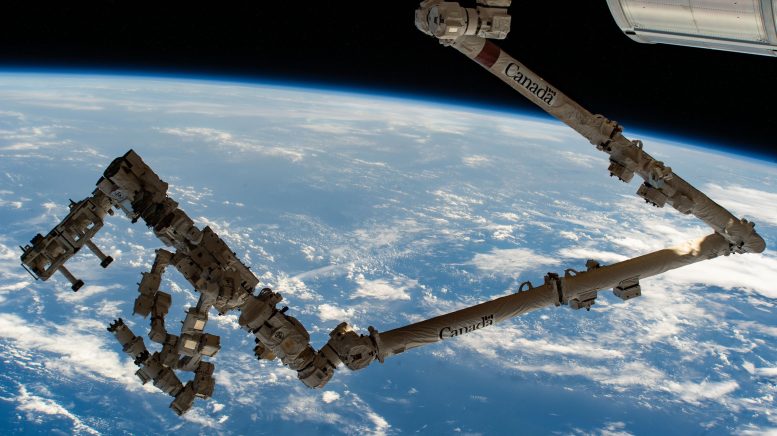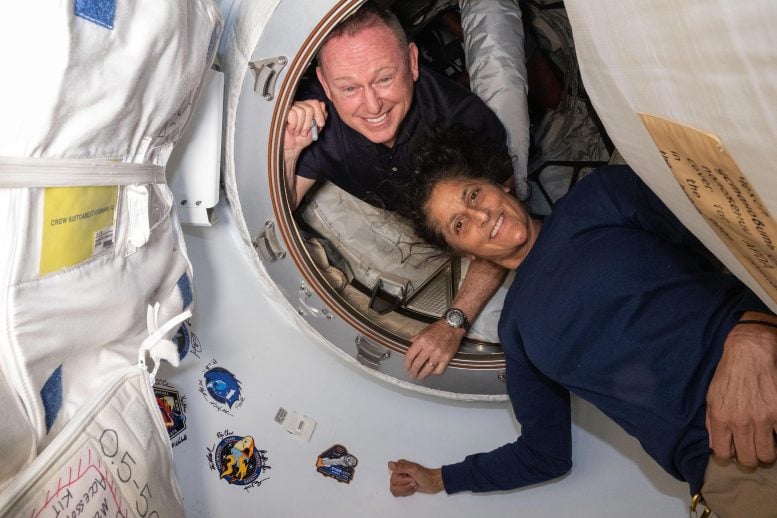NASA Gears Up for Dual Spacewalks and Microgravity Research


Expedition 71 Flight Engineer Tracy C. Dyson assists Expedition 71 Flight Engineer Mike Barratt, both NASA astronauts, during a spacesuit fit check inside the International Space Station’s Quest airlock. Credit: NASA
NASA astronauts are preparing for spacewalks on June 24 and July 2 to maintain and upgrade the International Space Station.
Spacewalk preparations and biotechnology research kept the Expedition 71 and NASA’s Boeing Crew Flight Test crews busy aboard the International Space Station (ISS) on Tuesday, June 18.
The next spacewalk at the orbital outpost will be June 24 when NASA astronauts Tracy C. Dyson and Mike Barratt will remove faulty radio hardware and swab station surfaces for microorganisms as was initially planned. A second spacewalk to remove and replace a gyroscope assembly, relocate an antenna, and prepare for future Alpha Magnetic Spectrometer upgrades is planned for July 2. NASA will determine assignments for the July 2nd spacewalk once the June 24 activities are complete.

The Canadarm2 robotic arm with Dextre, its fine-tuned robotic hand attached, extends from the International Space Station while orbiting 263 miles above the Atlantic Ocean. Credit: NASA
The duo was joined by fellow astronauts Matthew Dominick and Jeanette Epps on Tuesday afternoon and reviewed procedures on a computer that illustrated the planned spacewalking maneuvers. Afterward, Dominick and Epps practiced on a computer the Canadarm2 robotic arm operations they will use to support the two spacewalkers. At the end of the day, the foursome called down to mission controllers to discuss their spacewalk readiness.
The International Space Station’s main purpose is to support scientific research and advance technologies benefitting humans living on and off the Earth. The microgravity experiments reveal new phenomena that can only be observed in the weightless environment of the orbiting lab. Scientists and engineers then apply the unique results to promote the healthcare, commercial, and space industries.

NASA’s Boeing Crew Flight Test astronauts (from top) Butch Wilmore and Suni Williams pose for a portrait inside the vestibule between the forward port on the International Space Station’s Harmony module and Boeing’s Starliner spacecraft. Credit: NASA
Starliner crewmates Butch Wilmore and Suni Williams focused their Tuesday research activities on a treatment for respiratory conditions and DNA sequencing to identify microbes living on spacecraft. Wilmore worked in the Harmony module performing sample operations and videotaping liquid flows to improve the transport of liquid drugs in human airways. Afterward, Williams also worked in Harmony and sequenced microbial and fungal DNA samples collected from station water systems. Results may advance crew health, increase spacecraft safety, and upgrade health care systems on Earth.
Dyson worked in the Kibo laboratory module during the afternoon configuring space biology hardware. She removed research habitats and accessed the Cell Biology Experiment Facility, an incubator with an artificial gravity generator, setting it up for future experiments.
From the station’s Roscosmos segment, Commander Oleg Kononenko studied how free-floating objects move aboard the space lab and then inventoried gear stowed inside the Poisk module. Flight Engineer Nikolai Chub transferred water delivered aboard the Progress 88 resupply ship into station water tanks. Flight Engineer Alexander spent his day working on life support gear, cleaning ventilation systems, and measuring the vibrations the Roscosmos modules experience as the station orbits the planet.


